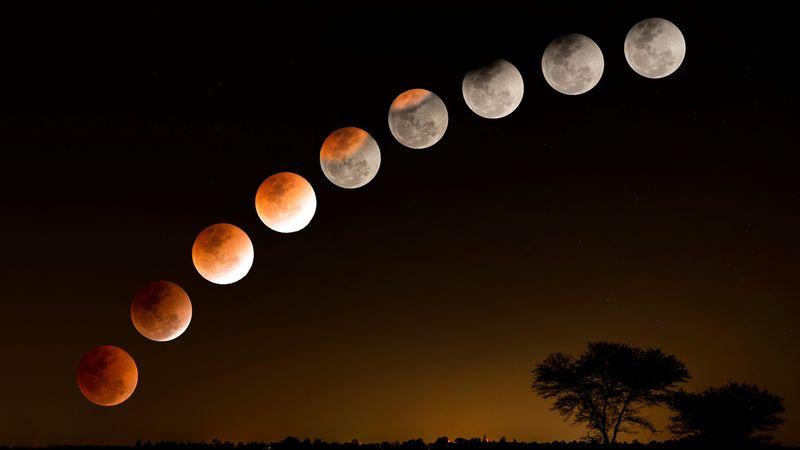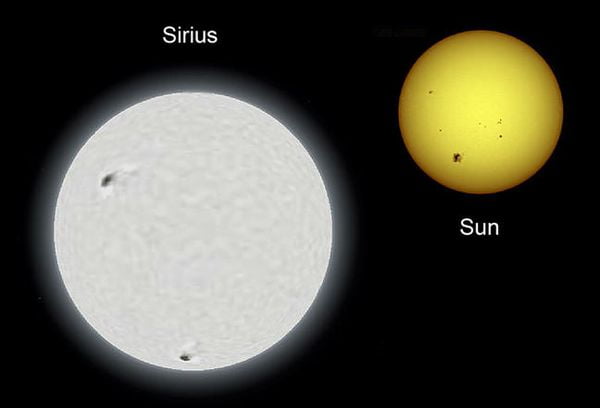The astronomical calendar for 2024 is rich in vivid space events. During the year, earthlings will see fabulous starfalls, mystical supermoons, and magical solar and lunar eclipses. What exciting events will the sky promise? Here is a detailed astronomical calendar for 2024.
Solar eclipses
A solar eclipse occurs when the Sun, Moon and our planet line up in a straight line and it appears that the Earth’s natural satellite eclipses the sun. During this astronomical event, the Moon covers part or all of the solar disc.

The first solar eclipse in 2024 will happen on 8 April, and it will be total. The total duration of this celestial event will be more than five hours.
Locals of North America and some islands in the Pacific and Atlantic Oceans will be able to witness the full phase of the total solar eclipse. Different eclipse phases will be visible in the west of Europe, in the north of South America, in the Arctic and in the waters of the Pacific and Atlantic Oceans.
According to the astronomical calendar, the second solar eclipse in 2024 will be annular and occur on 2 October. Different phases of the annular eclipse will be visible in Antarctica, North and South America, as well as the Pacific and Atlantic Oceans. In general, the eclipse will last about six hours.
Solar eclipses occur on the new moons in April and October.
Lunar eclipses
During a lunar eclipse, the Sun, the Moon and our planet line up straight while the Earth’s shadow covers the Earth’s satellite. Lunar eclipses are total and partial, depending on whether the Earth’s shadow covers the lunar disc entirely or partially.

Like solar eclipses, lunar eclipses on the astronomical calendar will occur twice in 2024, and both will be private. The first private lunar eclipse in 2024 will happen on 25 March.
The total duration of the eclipse, which will be visible from anywhere the Moon is above the horizon at the moment, including North and South America, Antarctica, and Alaska, will be more than four and a half hours.
The second private lunar eclipse will occur on 18 September. Some phases of this celestial event will be seen in Europe, most of Asia, Africa, North America, South America, the Pacific, Atlantic, Indian Ocean, the Arctic, and Antarctica. The eclipse will last about four and a half hours.
Lunar eclipses on the astronomical calendar appear in the March and September full moons.
Supermoons
A supermoon is an astronomical event observed during the Moon’s maximum approach to Earth.

According to the astronomical calendar, two supermoons are expected in 2024. During the coincidence of a supermoon with a full moon, the Moon is tinted with a beautiful reddish hue, the appearance of which terrified people in ancient times.
The first supermoon in 2024 is expected on 18 September and the second on 17 October. In general, a supermoon lasts three to four days, and the coincidence of the supermoon with the perigee is a few minutes.
Meteor showers
The starry sky in 2024 will repeatedly give the earthlings an opportunity to see a Starfall and make a wish on a falling star, which is a dream of almost every inhabitant of our planet at least once.

The first Meteor shower in 2024 is the Quadrantids, a meteor shower with a radiant in the Bootes constellation. According to the astronomical calendar, stellar rain will pour on our planet from January 1 to 6.
The most intense phase of the Quadrantid star shower occurs from 3 to 4 am, when 60 to 200 meteors per hour can be seen. Residents of the Northern Hemisphere will see this astronomical event.
Lyrids
The Lyrid star shower, with a radiant in the Lyra constellation, provides earthlings with a stunning spectacle. Lirids, which were mentioned before our era, are considered by astronomers to be one of the oldest meteor showers.
According to the astronomical calendar, the Lyrid Starfall can be seen every year from 16 to 25 April. Inhabitants of the Northern Hemisphere can enjoy the bright celestial event.
The peak of the Lyrid starfall activity usually occurs on 22-23 April, and the total intensity is 15-20 meteors per hour.
Aquarids
The Earthlings will see another bright celestial event, the Eta Aquarid meteor shower with a radiant in the constellation Aquarius, in the first days of May.
The peak of Aquarida starfall activity on the astronomical calendar begins immediately after the Lyrid meteor shower and reaches its maximum on 6-7 May. Shooting stars are best seen in the Southern Hemisphere – at the peak of activity, Aquarids will show up to 60-70 meteors per hour.
Perseids
The Perseids Starfall is one of the most popular meteor streams; according to the astronomical calendar, it will amaze earthlings from 10 to 20 August.
The Perseid star shower peaks on 12-14 August, reaching up to 100 meteors per hour. This bright celestial event will be able to see the inhabitants of the Northern Hemisphere.
The ancestor of the Perseids starfall is the comet Swift-Tuttle – it approaches our planet about once every 135 years. The last time it happened was in 1992.
Taurids
The astronomical calendar says that the Taurids are one of the longest meteor shower of the year. They can be seen from 7 September to 10 December. The peak of Taurids stargazing activity usually occurs on 4-6 November. Bright and large Taurid meteors are clearly visible in the night sky, although the intensity of these meteor streams is quite low, no more than 5-10 meteors per hour.
Enthusiasts can see the Taurids of astronomical events in both the Northern and Southern Hemispheres but at different times.
Orionids
The beautiful Orionids starfall with a radiant in the constellation of Orion can be observed annually from 2 October to 7 November according to the astronomical calendar.
The peak of Orionid starfall activity usually falls on 21-22 October, and the average intensity does not exceed 20-25 meteors per hour.
The most beautiful astronomical event can be seen by the inhabitants of the entire planet, but in the countries of the Northern Hemisphere, where Orion is better visible, will enjoy a brighter spectacle.
Leonids
Leonids starfall with a radiant in the constellation of Leo, known for its bright and abundant flashes, is observed annually from 6 to 30 November. According to the astronomical calendar, the peak of the meteor shower falls on 17 to 18 November. During this period, the bright starfall will present no more than 15 meteors per hour.
Usually, people observe Leonids from anywhere on Earth, but they will see a brighter celestial event in the Northern Hemisphere.
Geminids
The beautiful and bright Geminid meteor shower with a radiant in the constellation Gemini is observed annually from 7 to 18 December.
The Geminid Starfall reaches its maximum intensity on 13-14 December. At this time, you can see up to 120 bright meteors per hour.
The Geminids star shower is visible from any point of the globe, but the population of the Northern Hemisphere will see the exceptionally bright celestial event.








